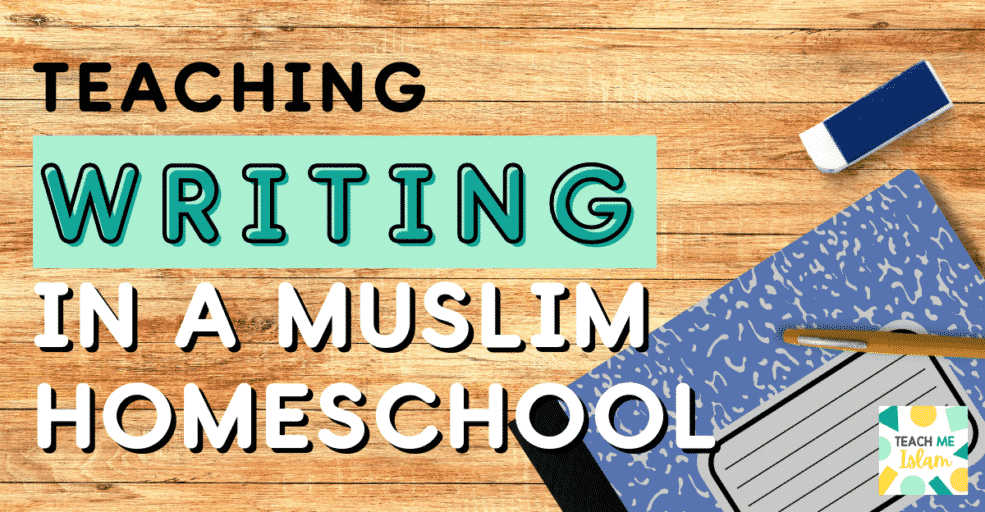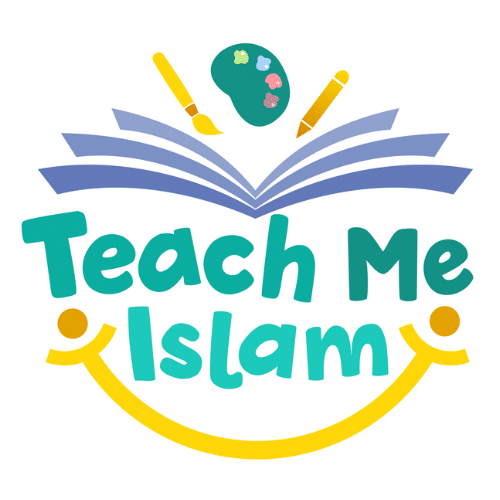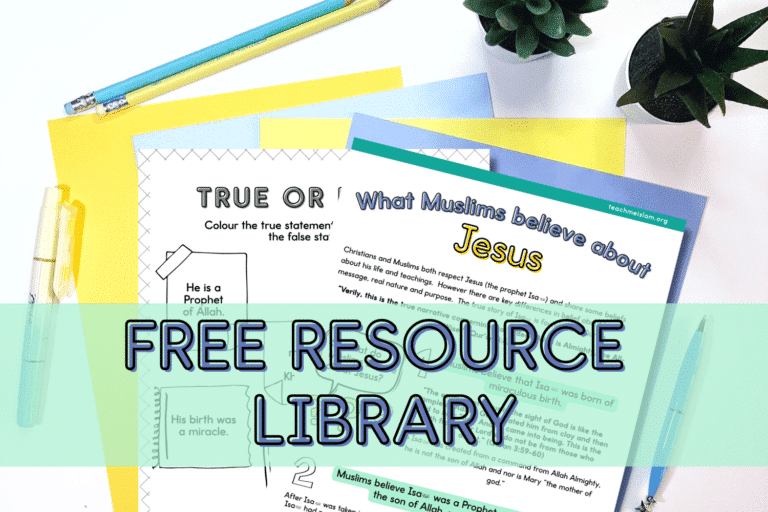Do you ever get really excited about an English resource and then your heart sinks when you see the content? The wrong resources can feel like ill-fitting shoes, you try to make the best of it but eventually you admit they are uncomfortable and they gather dust in the corner. Teaching writing in a Muslim homeschool isn’t always easy because the content of a lot of resources isn’t a perfect fit for us. The subject matter and examples could be less than ideal, the focus seems exclusively on fiction and there are pictures on every page which makes it a challenge to print. What would make teaching writing in a Muslim homeschool a pleasure? Let’s dive in.
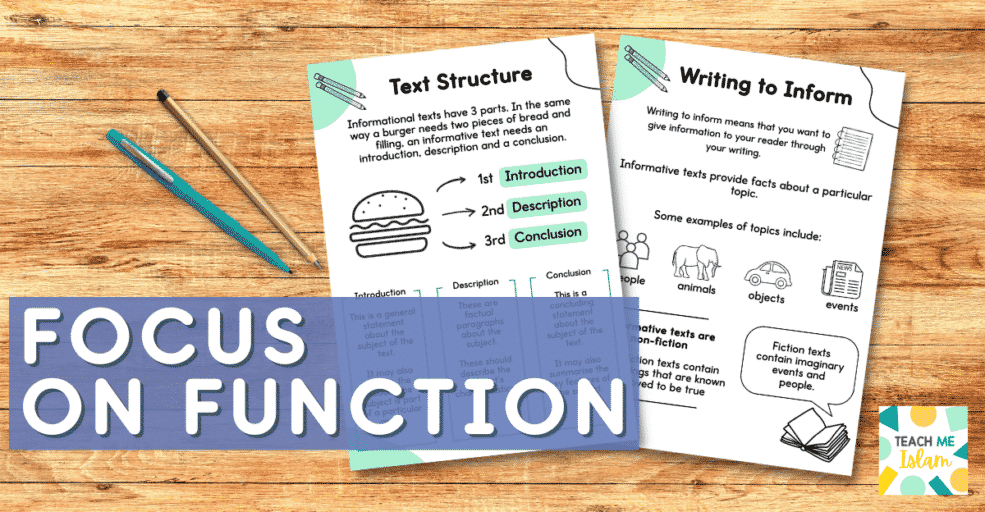
Focus on Function
In the UK National Curriculum children spend approximately half their writing lessons on fiction writing and divide the remainder between persuasive writing, informative writing, explanatory writing, instructional writing and writing to discuss. This is despite the fact that we spend the vast majority of our lives writing non-fiction. I am not advocating removing all kinds of fiction writing but instead creating a different balance between the writing types.
Muslim homeschools are busy places. They have a range of goals they are striving to achieve both academically and Islamically. It’s hard to stay focused and motivated but when you reduce your load and focus on what you know is equipping your child for life, it makes everything so much easier. The lightened load makes your work more achievable which in turn is motivating. Plus you and your child are naturally more invested when you both feel like what you are teaching is useful not just today but far into the future inshaAllah.
Integrate Islamic Content
Another way of making teaching writing feel beneficial is by integrating Islamic content. If you would like to read more about Islamically integrated resources and curriculum then click here for a detailed blog post. When you introduce Islamic content naturally into subjects other than Islamic Studies, you are modelling to your kids how Islam is relevant in all aspects of our lives. It stops the compartmentalization of their religion into a small part of their lives. Plus it enables you to cover so much more Islamic content.
For example in the Informational Writing Unit, there are various example texts about animals that mention how Allah designed them for the environments they live in. It isn’t the focus of the lesson, but the content is beneficial.
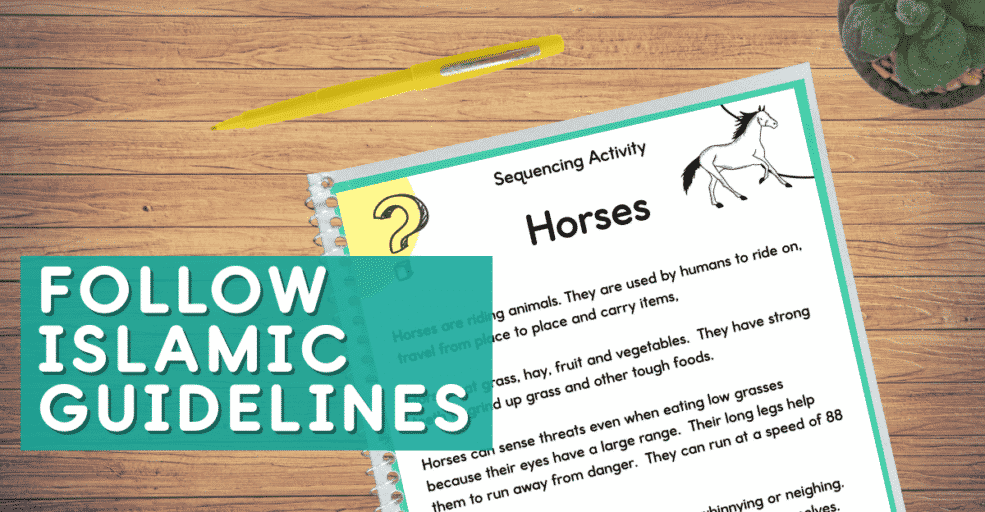
Follow Islamic Guidelines
Do you know who are mini-professors of behavioural science? Your kids! They watch your every move and definitely notice when you don’t do what you told them to do! It’s confusing to them when we use materials that directly contradict the values that we espouse day-in-day-out. But what’s the alternative? You can remove or edit but sometimes that is difficult depending on the resource. It’s important we stick to our Islamic guidelines because we want there to be barakah in our kid’s education. I highly recommend creating your own resource, purchasing a resource designed for Muslim kids or carefully assessing a resource before you buy, thinking about what changes you would have to make to it.
The result of sticking within the Islamic boundaries is confidence that you have prioritized correctly inshaAllah. Plus, a real hope for barakah in your lessons. This makes teaching writing in a Muslim homeschool a positive experience.

Follow your child’s interests
Write 2000 words about screwdrivers. Feeling enthusiastic? I thought not. That’s how kids feel when they are asked to write about something they don’t feel passionate about. One of my absolute favourite aspects of homeschooling is the ability to cater to your child’s interests. It makes them enthusiastic and it changes learning from pushing a boulder uphill to rolling it downhill. Most children are multi-passionate. However, if you have a child with a particularly deep obsession that isn’t appropriate for a writing assignment, try something related. Always with a paintbrush in hand but never a pencil? Ask them to research the history of paint, the science behind colour palettes, the world’s most expensive paintbrush…. the options seem endless.
Take your time when teaching writing in a Muslim homeschool
Teaching writing in a Muslim homeschool becomes stress-free when you take your time. Learning how to write a paragraph? Let’s just practice that for 3 weeks or more! Taking your time means not worrying about getting things ‘done’ by a certain date. You can then view improving writing as a process – not a checkbox.
We all like to be challenged to grow (that’s what drives us forward in life). But an equally important part of growth is enjoying the fruits of having learned—it is the act of using what has been gained that solidifies “the thing” as a person’s own possession. It feels incredible to use skills that are mastered before moving onto the next challenge.
Julie Bogart
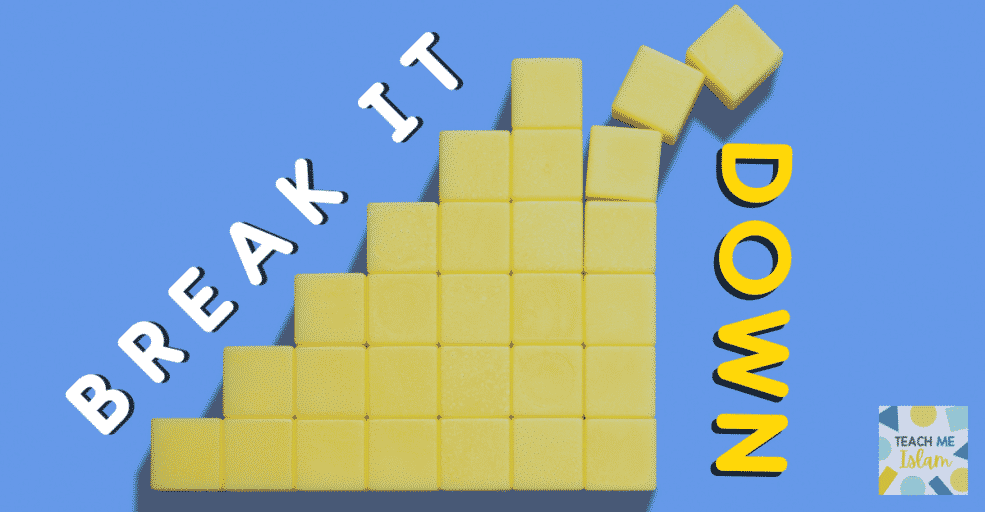
Break it down
Do you know what teachers use in the classroom to teach writing techniques effectively? Mini-lessons! They break down information into bite-sized pieces that students can practice and master to simplify the complex writing process. Mini-lessons are short lessons, often taught in small groups where teachers can focus on their students. Does that sound familiar? Yep, you thought that was just called homeschool, didn’t you?
You already teach in small groups and focus on your child’s understanding. The only thing that you might not remember is to really break down the writing process into small parts. It makes the writing process seem so manageable for both you are your child. The only trouble is that sometimes writing seems instinctive I certainly haven’t thought about topic sentences or when it was time to start a new paragraph. The decisions we make when we write seem natural to us and we often haven’t thought about each step individually.
It’s a bit like catching a ball. It may not seem like a process but you change your stance, position your hands in relation to each other and the ball and track it with your eyes. The point is that catching a ball can be broken down into smaller steps and it can be taught. Researching and creating your own resource or purchasing a step-by-step guide really can make a difference to the success of your writing lessons.
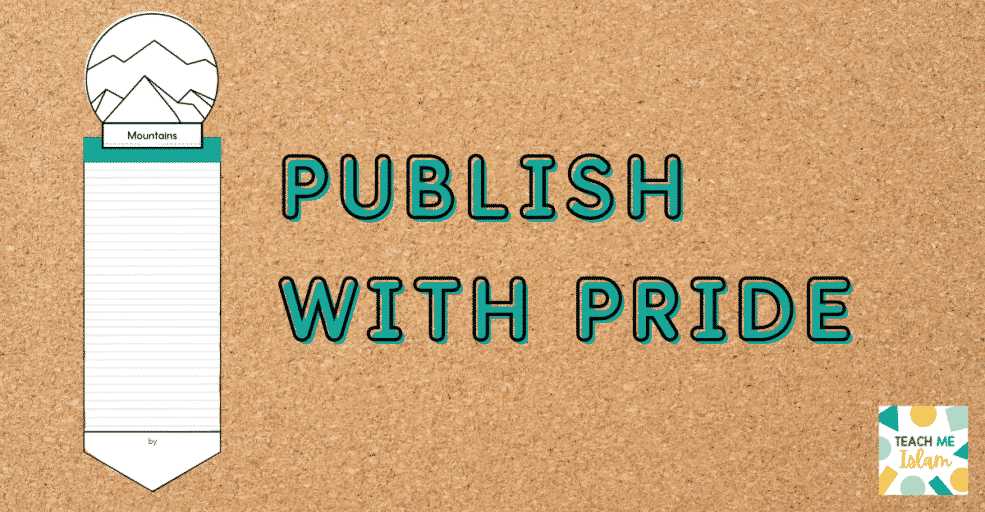
Publish with Pride
The final step of writing after the sometimes challenging and patient steps of revising and editing is publishing. This can be a lot of fun!
There are so many options for kids (and you) to explore.
⭐You can type up the work, use a graphic design website/app like canva to add pictures and fun elements. Download as a pdf to send to supportive family members and friends.
⭐You can make it into a lapbook by sticking/stapling the written piece of work in the middle and using illustrations or moveable pieces in the flaps.
⭐ Create a pennant poster with an illustration on top and written work in the middle. This looks great as a display. You can download examples for FREE here!
⭐Add the work to your collection of their best work. This can either be by sticking in an exercise book or collecting in a folder.
⭐Another option is to set up a blog and publish their work on that.
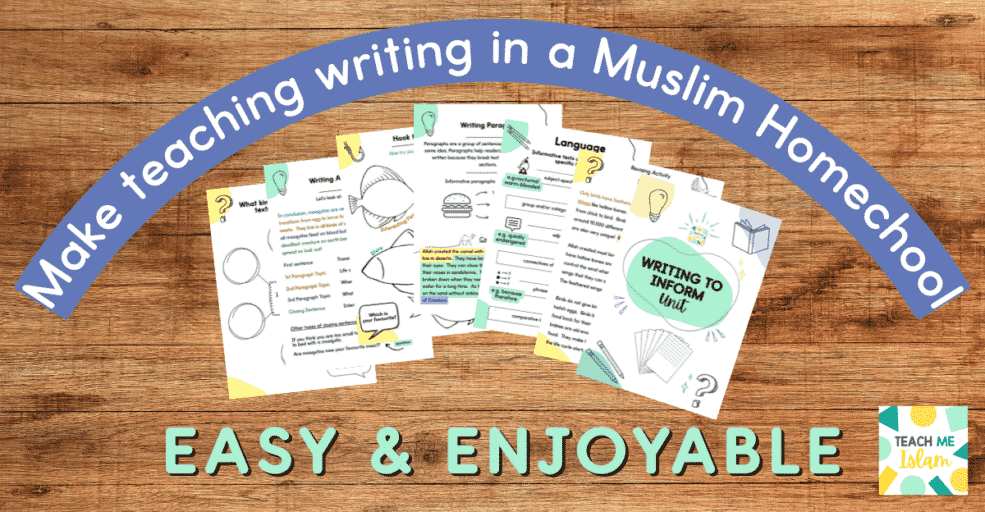
Make teaching writing in a Muslim Homechool easy and enjoyable.
I hope you’ve got some ideas about how to make teaching writing in a Muslim homeschool beneficial and enjoyable. It was a struggle to find the right resource to teach my kids, one that would meet all the Islamic guidelines, break down the writing process, adapt to their interests and naturally incorporate Islamic content. I created a complete Informational Writing Unit that is designed specifically to make teaching writing in a Muslim homeschool a breeze. It’s not only useful but a real time-saver! I think you’ll love it, find out more here.
Click here to download a FREE set of writing prompts, get tips and freebies delivered direct to your inbox and gain access to the free resource library.
Here are some other blog posts you may be interested in:
10 Priceless Features of a Muslim Homeschool
Should you use Islamically Integrated Resources or teach Islamic Studies separately?

